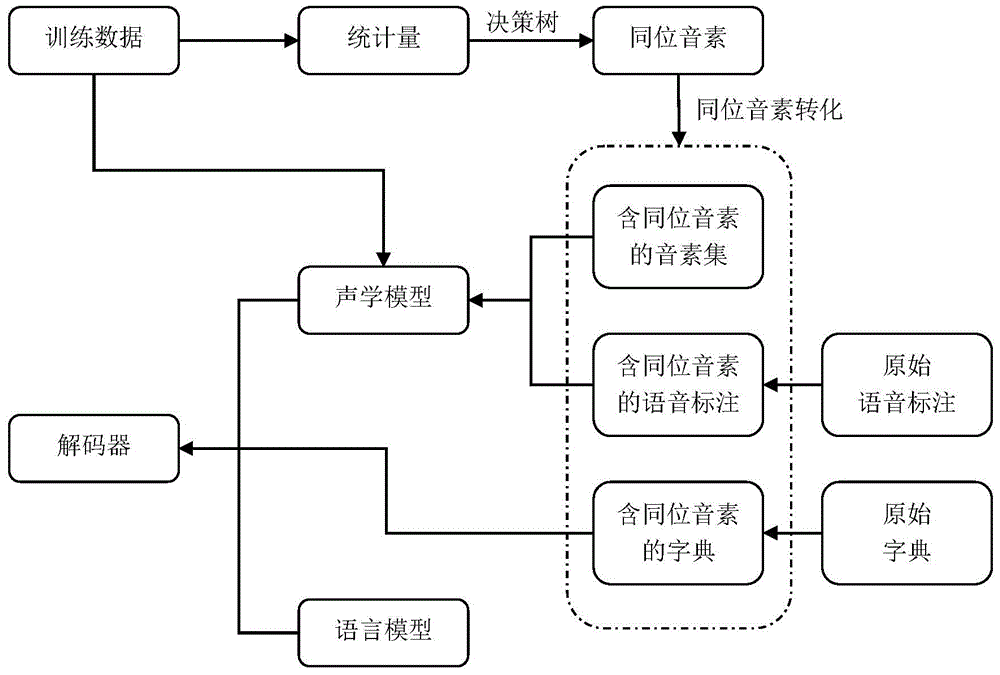Method for building acoustic model and speech decoding method based on acoustic model
A technology of acoustic model and establishment method, applied in speech analysis, speech recognition, instruments, etc., can solve problems such as unsuitable, exacerbated short-sightedness of level units, troubled agglutinative speech recognition, etc., to reduce confusion and improve overall performance.
- Summary
- Abstract
- Description
- Claims
- Application Information
AI Technical Summary
Problems solved by technology
Method used
Image
Examples
Embodiment
[0047]The embodiment of the present invention utilizes the method of isotopic phoneme separation to refine and classify the Korean phoneme set, and the steps include: extracting phonetic features from the Korean training data; calculating the three-factor Gaussian mixture model statistics of the basic phoneme set containing 40 phonemes in Korean; using The self-clustering method calculates the decision tree problem set according to the statistics; uses the decision tree to separate isophones, and the number of separated isophones is 30; according to the results of isophone separation, update the phoneme set, label and dictionary; use the labels containing isophones to train acoustics model, the acoustic model uses a new phoneme set containing 70 phonemes; decoding is performed using a new acoustic model and a dictionary containing allophones instead of an acoustic model and dictionary that only uses base phonemes.
[0048] The embodiments of the present invention use the isotop...
PUM
 Login to View More
Login to View More Abstract
Description
Claims
Application Information
 Login to View More
Login to View More - Generate Ideas
- Intellectual Property
- Life Sciences
- Materials
- Tech Scout
- Unparalleled Data Quality
- Higher Quality Content
- 60% Fewer Hallucinations
Browse by: Latest US Patents, China's latest patents, Technical Efficacy Thesaurus, Application Domain, Technology Topic, Popular Technical Reports.
© 2025 PatSnap. All rights reserved.Legal|Privacy policy|Modern Slavery Act Transparency Statement|Sitemap|About US| Contact US: help@patsnap.com

